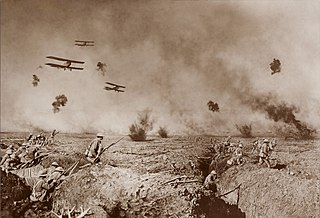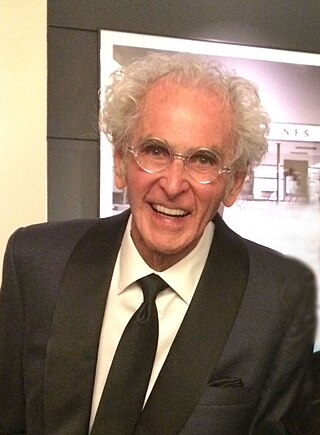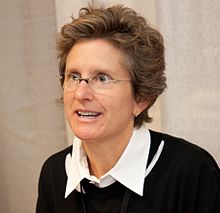
Adobe Photoshop is a raster graphics editor developed and published by Adobe Inc. for Windows and macOS. It was originally created in 1987 by Thomas and John Knoll. Since then, the software has become the most used tool for professional digital art, especially in raster graphics editing. The software's name is often colloquially used as a verb although Adobe discourages such use.

Photomontage is the process and the result of making a composite photograph by cutting, gluing, rearranging and overlapping two or more photographs into a new image. Sometimes the resulting composite image is photographed so that the final image may appear as a seamless physical print. A similar method, although one that does not use film, is realized today through image-editing software. This latter technique is referred to by professionals as "compositing", and in casual usage is often called "photoshopping". A composite of related photographs to extend a view of a single scene or subject would not be labeled as a montage, but instead a stitched image or a digital image mosaic.
The following list comprises significant milestones in the development of photography technology.

Photograph manipulation involves the transformation or alteration of a photograph. Some photograph manipulations are considered to be skillful artwork, while others are considered to be unethical practices, especially when used to deceive. Photographs may be manipulated for political propaganda, to improve the appearance of a subject, for entertainment, or as humor.

Jerry Norman Uelsmann was an American photographer.

Adobe Lightroom is a piece of image organization and image processing software developed by Adobe Inc. as part of the Creative Cloud subscription family. It is supported on Windows, macOS, iOS, Android, and tvOS. Its primary uses include importing, saving, viewing, organizing, tagging, editing, and sharing large numbers of digital images. Lightroom's editing functions include white balance, presence, tone, tone curve, HSL, color grading, detail, lens corrections, and calibration manipulation, as well as transformation, spot removal, red eye correction, graduated filters, radial filters, and adjustment brushing. The name of the software is based on darkrooms used for processing light-sensitive photographic materials.
Lillian Bassman was an American photographer and painter.
Mikkel Aaland is a Norwegian-American photographer, based in San Francisco and Norway. He is known for work in the early days of digital photography, as well as his twelve books on photography. He is best known for his 1978 book Sweat, an illustrated history of sweat bathing. His documentary photographs have been exhibited in major institutions around the world, including the Bibliothèque Nationale in Paris and the former Lenin Museum in Prague. Aaland is the author of works of memoir, books featuring his own photojournalism as well as works on digital imaging and various Adobe Photoshop products.

Darkroom manipulation is a traditional method of manipulating photographs without the use of computers. Some of the common techniques for darkroom manipulation are dodging, burning, and masking, which though similar conceptually to digital manipulations, involve physical rather than virtual techniques. Darkroom manipulations are those processes used, for example, to remove unwanted areas and change image background, among others. Varying techniques can be used to accomplish the same tasks.

Stephen Wilkes is an American photographer, photojournalist, director and fine artist.
John Paul Caponigro is an Environmental Fine Art Landscape Photographer. He is the son of the American photographer Paul Caponigro and Eleanor Caponigro a graphic designer. John Paul attended Yale University, and the University of California, Santa Cruz where he was trained as a painter and later as a photographer. After college John moved to Maine and became an artist in residence at The Center for Creative Imaging. John now works with photo-based digital imaging as his primary medium. Dan Steinhardt of Epson considers John Paul "...one of the great mentors of the photographic medium". The American photographer Joyce Tenneson has said, "John Paul Caponigro is the rare combination of gifted artist and master technician. He works from the heart to create images that are poetic and evocative, and at times, mystical. He is someone whose sensitivity and intelligence work to break new ground, and someone I will enjoy watching in the years to come.". He has been awarded membership into many photographic organizations including the Photoshop Hall of Fame, the Epson Stylus Pros, Xrite Coloratti, and the Canon Explorers of Light. His work crosses the lines between photography and painting and displays knowledge of painterly composition and color theory, coupled with content of modern science, psychology, primal cultures, and the environment. The photographer Arnold Newman stated,"...Caponigro's mysterious and magical images go beyond reality or surrealism. He has created a wonderful new world of his own". John Paul Caponigro lives in Cushing, Maine with his photographer wife Arduina, and their son.

Rebecca Norris Webb is an American photographer. Originally a poet, her books often combine text and images. An NEA grant recipient, she has work in the collections of the Museum of Fine Arts, Boston, and The Cleveland Museum of Art. Her photographs have appeared in The New Yorker, The New York Times Magazine, Le Monde, and other magazines. She sometimes collaborates with photographer Alex Webb, her husband and creative partner.
Brooke Shaden is an American fine art photographer.

Peter Krogh is an American photographer, author, public speaker, filmmaker and publisher. He is best known for his work in the field of digital asset management (DAM).
Jamie Baldridge is an American photographer and arts educator. He creates highly manipulated and surreal tableau vivant photographs. He is currently a professor of Photography in the Visual Arts Department at the University of Louisiana at Lafayette.
Vincent Versace is an American photographer and a Nikon Ambassador. He is a recipient of the Computerworld Smithsonian Award in Media Arts & Entertainment. His work is part of the permanent collection of the Smithsonian Institution's National Museum of American History.
Holly Roberts is an American visual artist known best for her combination of photography and paint. “Holly Roberts caused a stir in the fine art photography world of the eighties by fusing painting and photography, painting directly onto photographs”. Roberts lives and works in Corrales, New Mexico. Her work is in the permanent collection of several museums in the United States.
Cara Romero is an American photographer known for her digital photography that examines Indigenous life through a contemporary lens. She lives in both Santa Fe, NM and the Mojave Desert. She is of Chemehuevi descent.
Julianne Aguilar is an artist and writer. She wrote "We've Always Hated Girls on the Internet: A Wayback Machine Investigation", a story about internet harassment and internet vulnerability. She is interested in the way people create identities through their presence on the internet. Her work focuses on her appeal to the ability for the modern world to be able to connect though social media platforms and other forms of internet communication. She works primarily in digital media and video-making. She currently lives in Santa Fe, New Mexico.
Isabelle Hayeur is a Canadian visual artist known for her photographs and experimental film. Hayeur’s works are inspired by a critical analysis of ecology and urbanity. Since the late 1990s, Hayeur has created public art commissions, photography books, video installations, and has participated in many solo and group exhibitions. Her artworks can be found in both national and international collections, including those of the National Gallery of Canada, the Vancouver Art Gallery, the Art Gallery of Ontario, the Art Gallery of Alberta (Edmonton), the Musée d’art contemporain de Montréal, the New Orleans Museum of Art and the Museum of Contemporary Photography in Chicago, and the Fonds national d’art contemporain in Paris.








